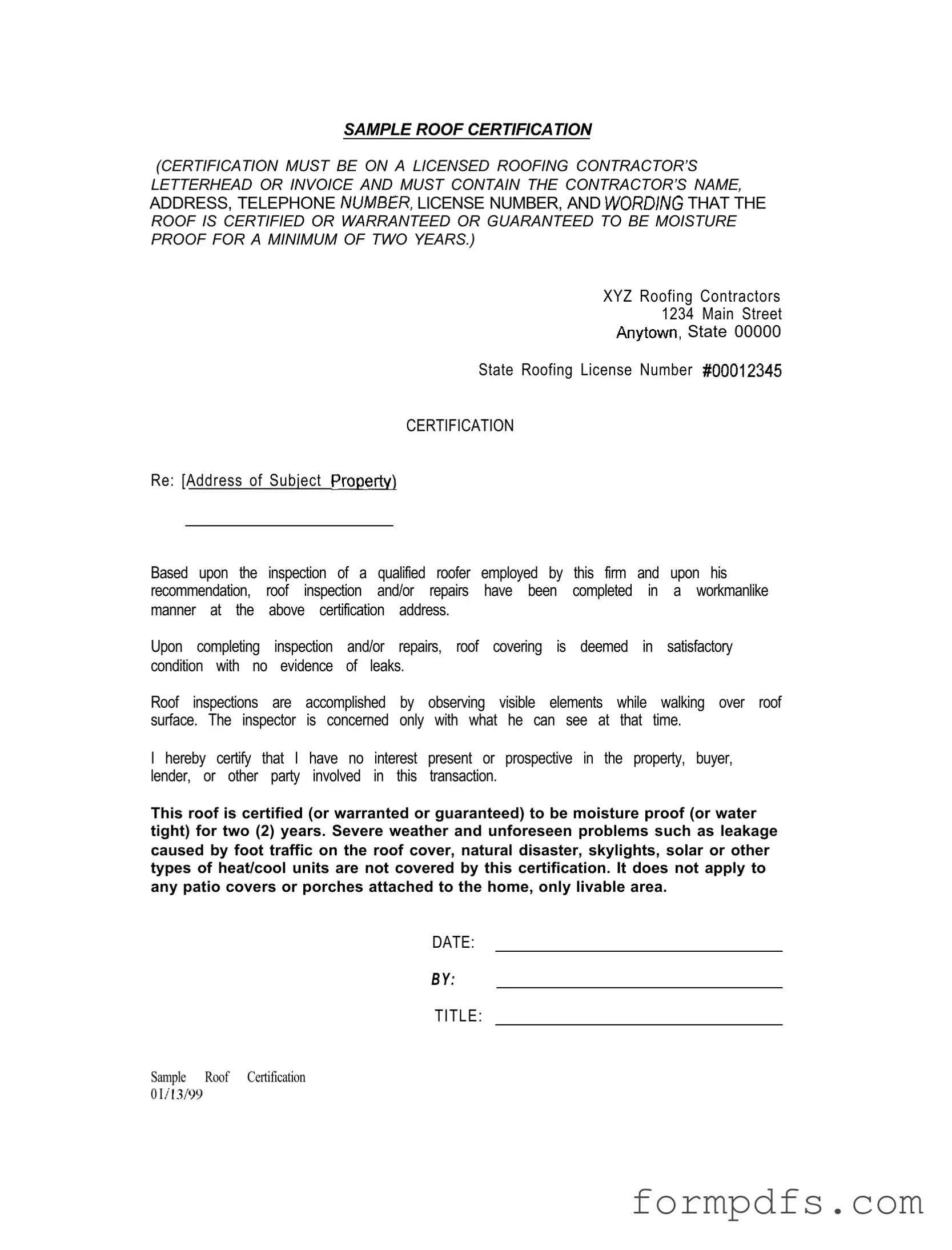What is a Sample Roof Certification form?
The Sample Roof Certification form is a document issued by a licensed roofing contractor that verifies the condition of a roof after inspection or repairs. It confirms that the roof is moisture-proof for a minimum of two years, provided under specific conditions. The certification must be presented on the contractor's official letterhead or invoice, ensuring legitimacy and professionalism.
What information is required on the form?
The form must include essential details such as the contractor's name, address, telephone number, and license number. Additionally, it should state that the roof is certified, warranted, or guaranteed to be moisture-proof for at least two years. This information provides assurance to the property owner and any involved parties about the contractor's qualifications and the roof's condition.
How long is the roof certified for moisture proofing?
The roof is certified to be moisture-proof for a minimum duration of two years. This timeframe begins from the date of certification, which is also recorded on the form. It is important for homeowners and buyers to understand this limitation, as it outlines the period during which the contractor is responsible for any moisture-related issues.
What does the certification cover?
The certification covers the roof's condition at the time of inspection and certifies it as free from leaks. However, it does not cover damage caused by severe weather, natural disasters, or other unforeseen problems. Issues arising from foot traffic, skylights, or any heating and cooling units are also excluded. Therefore, homeowners should be aware of these limitations when relying on the certification.
Who performs the roof inspection?
A qualified roofer employed by the roofing contractor conducts the roof inspection. This professional evaluates visible elements of the roof while walking over its surface. The inspection's thoroughness is limited to what can be observed at that moment, emphasizing the importance of regular maintenance and monitoring beyond the certification period.
Is there any conflict of interest in the certification process?
The contractor certifying the roof must declare that they have no present or prospective interest in the property, buyer, lender, or any other party involved in the transaction. This declaration helps ensure that the certification is unbiased and serves the best interests of the property owner or potential buyer.
